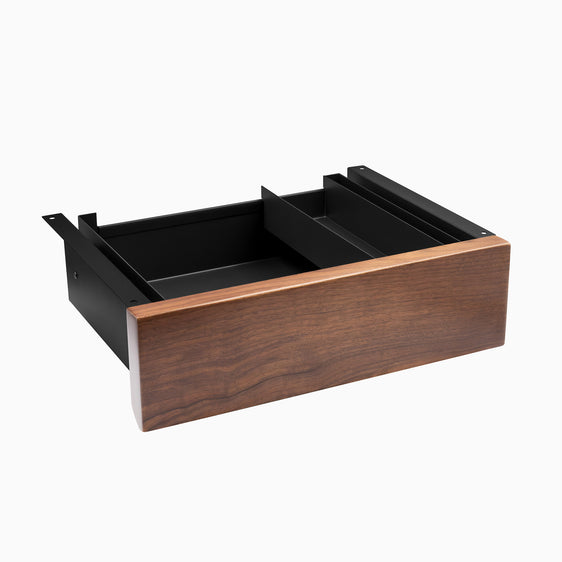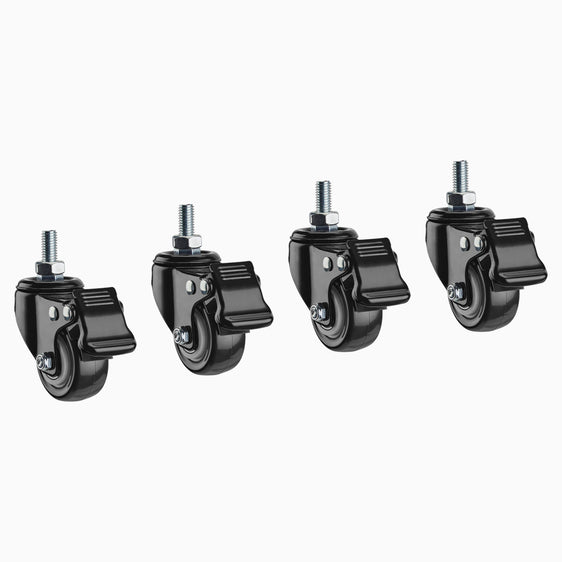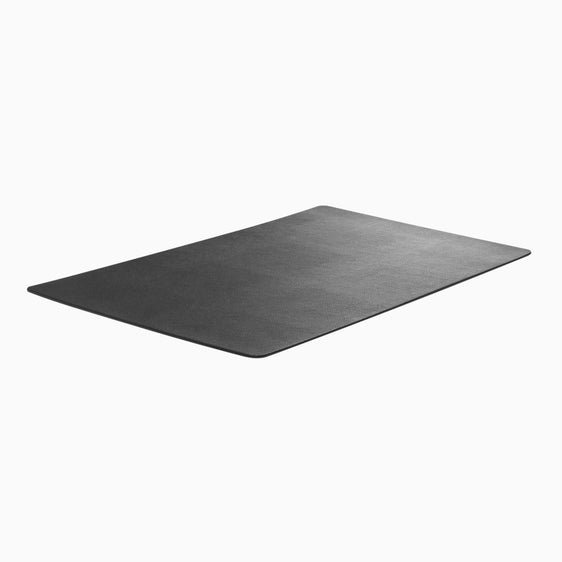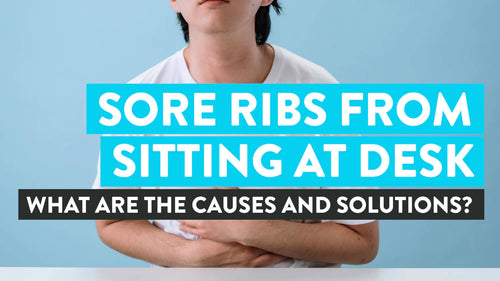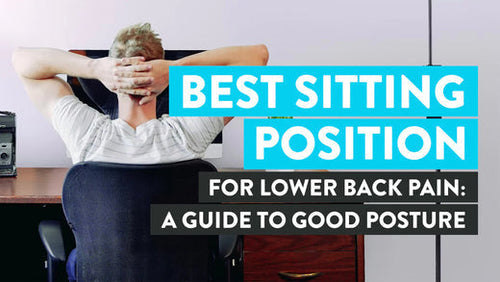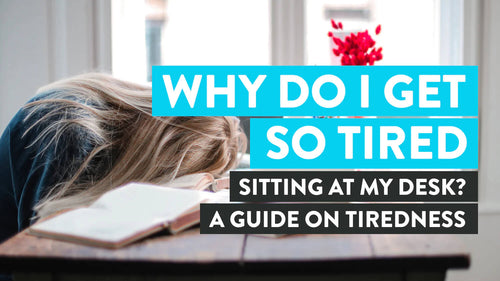
News
Do Standing Desks Cause Varicose Veins?
Hayden AdamsVaricose veins, similar to spider veins, are enlarged, ropey veins that commonly appear on the legs. When there is pressure on your legs for long periods, this causes decreased blood flow resulting in varicose veins. Both sitting or standing for prolonged periods puts you at an increased risk.
When working at a desk all day, opt for a desk for standing. Although prolonged standing can increase your risk of spider veins, there are benefits to standing desks. Many versions of standing desks are adjustable, so you can ensure that you are comfortable while you work. Some studies even show that a standing desk may result in higher productivity.
Although switching from sitting to standing isn't as beneficial for weight loss as exercise, it can still give you a boost. If you sit all day long, you won't burn many calories. Standing can also reduce risks of diabetes heart disease and reduce back pain. Some participants who used standing desks even said that their back pain was reduced in as little as two weeks.
Standing desks can also improve mood and energy levels at work. Work usually isn't the most exciting thing to spend your time with. However, by standing more during the day, studies have shown that utilizing a standing desk has experienced less stress and fatigue when compared to those who sat at their desk.

So, although both sitting and standing at a desk all day can increase the risk of varicose veins, you may experience many more benefits when standing. If you do opt for a standing desk, it is essential to take breaks throughout the day to sit and give your legs some rest.
You may also get in a quick workout while standing at your desk. This can allow blood flow throughout your entire body while you're at work. Some standing desk exercises include:
-
Gluteal squeeze: Contract butt muscles for 3 seconds and release
-
Calf raises: Gently stand on your toes and contract your calf muscles. Hold for 3 seconds, and release.
-
Hamstring curls: Lift one foot backward toward your back and hold for 15 seconds. Repeat on the other leg.
-
Side lunges: Shift your weight to one side of your body while bending your leg on the same side. Repeat on the other leg.
-
March in place: Bring each leg up to your hip as you stand by your desk.
-
Squats: Contract your glutes as you bend your knees and lower your body. Keep your knees behind your toes.
When doing any of the above exercises, make sure to tighten your core to ensure you have good posture. Stretching your legs throughout the day can also help increase blood flow when using both standing desks and sitting desks.
Standing desk stretches include:
-
Leaning over and touching your toes or shins
-
Alternate lifting each leg up to your chest and hold
-
Place one foot on the other knee and slowly lower your hips. Alternate on each leg.
Standing desks can still be a risk for spider veins, even if you do the above exercises and stretches. Most experts agree that alternating positions throughout the day are the best option for preventing varicose veins. If you're standing at your workplace, be sure to have a chair nearby where you can take little breaks to sit. Do this at least a couple of times per hour, even if you can only do so for a few minutes.
Standing desks also allow you to alternate between standing and sitting, making them an excellent choice.
{{ spec_dual_bamboo_desk }}Does Standing At Work Cause Varicose Veins?

Standing for too long can cause the veins in your leg to overwork, causing blood to pool in your legs. Occupations that require you to stand for prolonged periods can add a lot of pressure on your legs. When this pressure increases in the veins, blood valves can weaken, which may put you at risk of getting varicose veins.
If you already have spider veins, continuing this routine may cause them to worsen. You may experience leg pain, heaviness in your legs, burning sensations, or feeling discomfort that you can only alleviate with movement or changing leg positions.
In jobs where you are on your feet all day, do your best to alternate between standing and sitting as much as you can. Take some time to sit down, stretch, or do simple leg workouts throughout the day. By keeping your legs moving, even by sitting throughout the day, your legs will receive plenty of blood flow.
Additionally, the type of shoes you wear at your standing desk may play a role. There are shoe options that relieve pressure from certain parts of your feet, creating less stress on your legs. High heels may look attractive and professional but can create quite a bit of discomfort throughout the day. You may also invest in a supportive anti-fatigue mat to stand on for further relief.
{{ spec_anti_fatigue_mat }}At the end of your day at work, relax by elevating your legs. This changes the position that your legs have been in all day, causing blood to flow in the opposite direction. The more blood flow you can get through your legs, the better. It is also beneficial to work out, even if it is just five or 10-minute sessions throughout the day. In fact, some studies show that it is more helpful to work out periodically throughout the day rather than one extended period of exercise.
Is Standing or Sitting Worse for Varicose Veins?
Damaged leg veins cause varicose veins. Veins push blood through one direction through valves, which causes blood to pool when there isn't plenty of circulation from exercise. Unfortunately, there may be other variables in addition to sitting and standing that could be risk factors for varicose veins.
There are many reasons you may experience spider veins. 40% of men and 70% of women will have varicose veins by the age of 60. Genetics also play a role, so if one of your parents had varicose veins, there's a better chance you will too.
Weight gain can also cause varicose veins. Whether you're overweight, obese, or are pregnant may all pose a risk. Blood valves in your veins work hard to overcome gravity and cycle blood through your body. With any type of weight gain, this adds additional work to keep blood flowing through your veins, putting you at an increased risk.
Neither sitting nor standing alone is the cause of varicose veins. In addition to the risk factors mentioned above, it's more about long periods with no movement. Sitting for prolonged periods causes the same risk factors as standing all day does.
Does Sitting Help Varicose Veins?
Sitting all day not only poses a threat to vein health, but it can be damaging to your overall health. In fact, the damage to your health that prolonged sitting is compared to smoking.
When you work at a job where you sit all day, your body isn't getting exercise very much. Even if you spend all day sitting for work, go home and work out, it may not make a difference in getting varicose veins. Even if you get some blood flow back into your legs at the end of the day, there is still a period of time when your legs are in rest mode.
During the periods of time where you sit, your veins have to work extra hard to circulate blood to your heart. When blood pooling occurs due to low circulation, you may experience ankle swelling, varicose veins, and even blood clots.
The position you sit in also plays a role in vein health and overall health. When sitting with your legs crossed or bent all day, the twists and turns make it even more challenging for your blood to flow through. Not only does this add increased risk to varicose veins, but it may also increase blood pressure and result in poor posture.
Can Sitting Down Too Much Cause Varicose Veins?
Sitting for prolonged periods can cause varicose veins and make symptoms even worse. If you already have varicose veins, you likely experience some form of discomfort already. By continuing to sit all day, you may cause worsened symptoms.
Though varicose veins are often thought of as a cosmetic problem, there are also medical issues that come along with these unsightly veins. Many people with varicose veins experience achy or tired legs. While it may start out as somewhat uncomfortable and not something you want to look at, it may become serious over time. Luckily, there are treatment options if you have varicose veins.As previously mentioned, take time to stand up throughout the day. Ideally, you should stand every 30 minutes to an hour, and even more if possible. If you work at a job that requires you to sit all day, this doesn't mean you are doomed to have varicose veins.
While at your desk, you may try peddling your feet as if you are splashing your toes in the water. Make a point to stretch your ankles and legs throughout the day. Stretching is an important exercise that increases blood flow amongst other health benefits. When you stretch, you increase blood flow and strengthen the muscles that support your veins.
Elevating your legs multiple times a day for 15 minute periods can also assist blood circulation. Be sure to raise your feet above your heart level to allow blood to avoid fighting against gravity. Raising your legs can also relieve some discomfort from ankle swelling, which is a common symptom of spider veins.

How Do You Prevent Varicose Veins When Standing All Day?
All superficial veins can become varicose, but legs are typically the body part you will see these purple veins more often than not. Because standing all day makes it challenging for blood to flow back up the leg, this can cause pressure on your veins, causing damage.
Although there is no foolproof method to prevent varicose veins completely, there are plenty of things you can do to reduce your risk. Any prevention methods can also be beneficial if you already have varicose veins and want to keep them from getting worse.If your occupation requires prolonged periods of sitting or standing, you must set aside some time to alternate positions. When sitting, get up and walk around a few times each hour. Alternatively, if you stand all day, take some time to give your legs some rest.
When sitting all day, walking around and stretching can strengthen the muscles supporting your veins. Even if your only option is to walk in place, it is better than continuing to sit. It may be helpful for some people to have a fitness band. You will be shocked at how few steps you're actually taking per day. Keep track of your steps, set step goals, and keep your legs moving.
Aside from alternating your leg positions throughout the day, it is vital to stay healthy overall. Drink plenty of water throughout the day, whether you are working or not. Some people benefit by purchasing large water bottles with ounces marked alongside the bottle. Healthy diet habits can also help prevent varicose veins. Reduce salty foods that can cause you to retain water in your body, creating pressure in your veins. Add plenty of color to your plate of food. Specifically, choose fruits and vegetables such as blueberries, strawberries, broccoli, and eggplant, which can help reduce inflammation.
Whether you sit or stand all day, putting your feet up above your heart level at the end of the day can help with blood circulation. Elevate your legs for around 15 minutes per day. In addition to reducing the risk of varicose veins, this may also reduce any symptoms associated with them.
If you are overweight, losing weight can also help reduce your risk of getting varicose veins. By doing many of the methods mentioned above, such as eating healthy foods and adding in exercise, you will likely lose weight naturally. Not only will the addition of nutritious foods and movement reduce your risk, but weight loss will put less pressure on your legs overall.
Interested in alternating standing and sitting during your work day in order to prevent varicose veins? Take a look at Desky's full range of stand in desks and get started on reducing your risk!


